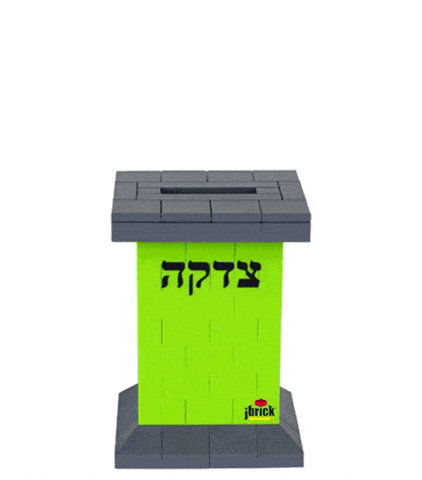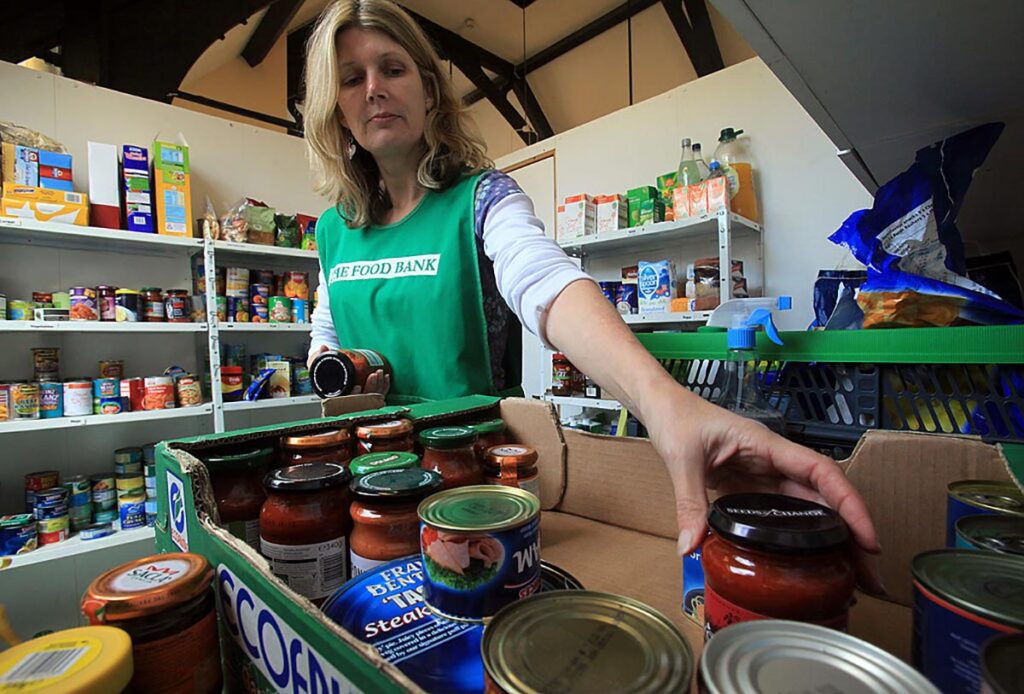
If you are Jewish, chances are you’re familiar with the idea of giving tzedakah. As Jews, tzedakah — giving money to charity — is a fundamental value that we’re encouraged to practice from a young age.
While it’s often translated as “charity,” tzedakah is more accurately defined as “justice” or “righteousness.” And while supporting charitable causes might seem straightforward, tzedakah is a nuanced concept with Jewish tradition spelling out why we should give, how much to give, and even how to give tzedakah. Here’s everything you need to know.
Is there a difference between tzedakah and charity?
Although giving tzedakah and giving charity might seem similar on the surface, the two have different origins and meanings. In Jewish tradition, tzedakah is an obligation, whereas charity is typically seen as a voluntary act.

The roots of the two terms illustrate this distinction. “Charity” comes from the Latin word “caritas,” which means love or dearness, suggesting that charitable acts are motivated by love. In contrast, “tzedakah” is connected with the word tzedek, meaning righteousness or justice; more than just generosity, it carries connotations of obligation.
Rabbi Jonathan Sacks explained, “What would be regarded as charity in other legal systems is, in Judaism, a strict requirement of the law.”
Traditionally, we often associate tzedakah with money, and many Jewish households and synagogues have tzedakah boxes. However, tzedakah isn’t limited to monetary gifts. It can also include offerings of food, clothing, time, or expertise.
The origins of tzedakah
The roots of tzedakah can be traced to Bereshit/Genesis 18:19, where God chooses Abraham as the first Jew so that he will instruct his children to “keep the way of the Lord by doing tzedakah and justice.”
The Torah emphasizes the importance of giving to the poor. It instructs leaving corners of fields unharvested for the needy and observing a sabbatical year where fruits are left for them. This is echoed in Vayikra/Leviticus 19:11, which states, “You shall not pick your vineyard bare, or gather the fallen fruit of your vineyard; you shall leave them for the poor and the stranger.”
In the Mishneh Torah, Matanot Aniyim (Gifts to the Poor) 10:1, Rambam underscores the great importance of the mitzvah of tzedakah: “We are obligated to be more scrupulous in fulfilling the commandment of tzedakah than any other positive commandment because tzedakah is the sign of the righteous.”
Meanwhile, the Talmud recounts various tales of rabbinic sages practicing tzedakah.
In one of the most well-known stories from Shabbat 156b, Rabbi Akiva is warned that his daughter would be bitten by a snake under her wedding canopy and die. When the day arrives, she inadvertently kills the snake while preparing for the wedding. Her father asks her, “What did you do to merit being saved from the snake?”
She shares that while everyone was busy with wedding preparations, she attended to a poor man at their door, offering him her own portion of food. Her act of tzedakah, the story suggests, shielded her from harm.
How much tzedakah should you give?
You may have heard about giving a certain percentage of your income to tzedakah. According to Jewish tradition, you should give at least 10% of your earnings to the poor.
Maimonides, also known as Rambam, wrote, “one-fifth of one’s assets is the best possible way, but one-tenth is the usual way…Anyone who has not given at least this much has not fulfilled the mitzvah” (Mishneh Torah, Matanot Aniyim/Gifts to the Poor 7:5).

This concept is rooted in the Torah’s mention of ma’aser ani, a tithe (offering) of one’s produce for the poor. While this commandment originally applied to agriculture in the land of Israel, many now give 10% of their income instead.
Do Jews actually give as they were commanded? Well, it’s worth noting that a 2010 study at the University of Indiana found that individual Jewish philanthropy in the U.S. exceeds that of any other group. In January 2023, the Times of Israel reported that half of America’s most generous philanthropists are Jewish.
Who should give tzedakah?
Jewish tradition generally holds that everyone has an obligation to give tzedakah, including those who are themselves in need. “Even a poor person who lives on tzedakah is obligated to give tzedakah to another,” Rambam wrote in the Mishneh Torah (Matanot Aniyim/Gifts to the Poor 7:5).
Why would a poor person be obligated to give tzedakah? According to Rabbi Jonathan Sacks, it’s because giving imparts dignity to the giver.
“Tzedakah is not only directed to people’s physical needs but also their psychological situation,” he wrote. “The paradox of giving is that when we…give to another, it is we ourselves who are lifted.”

While physical needs can be met by others or the community, psychological needs are just as crucial. Therefore, those dependent on tzedakah should still give to others, ensuring no one is stripped of the dignity that comes from giving.
However, Rabbi Moses Isserles saw it differently, writing in the Shulchan Aruch (Yoreh Deah 251:3), “One is not obligated to give tzedakah until one has a livelihood.” Meanwhile, in the Aruch Hashulchan (Yoreh De’ah 251:5), Rabbi Yechiel Epstein clarifies that those in need are obligated to give only a small amount of tzedakah each year.
It matters how you give tzedakah
While a single substantial donation could fulfill the mitzvah of tzedakah, it’s preferable to give smaller amounts regularly. In his commentary on Pirkei Avot 3:15, Rambam wrote that repeated acts of tzedakah make a person more generous:
“Good character traits do not come to a person by virtue of the greatness of a deed, but rather by the frequency with which he performs it. To acquire good character traits, one must perform good deeds again and again.”
Rambam’s wisdom parallels modern psychological insights. As psychologist Tara Brach notes, “When we consistently practice new actions we can actually rewire the structure and the function of our brain.”

Beyond how often we should give, Rambam also discusses the ideal spirit of giving. In the Mishneh Torah (Matanot Aniyim/Gifts to the Poor 10:4), he wrote:
“Anyone who gives tzedakah to a poor person with a scowl and causes him to be embarrassed, even if he gave him a thousand zuz, has destroyed and lost any merit thereby. Rather, one should give cheerfully, with happiness and empathy for his plight.”
Another benefit of giving tzedakah is that it reminds us, as Rabbi Sacks wrote, that our possessions are not merely ours but are seen as gifts from God, fostering a sense of gratitude and humility.
By recognizing that our wealth and property are a part of something greater, we are reminded to cherish and not take them for granted. Such an understanding reinforces the principle that we should not let money dominate our lives but be continually grateful for what we have. Giving tzedakah doesn’t merely support others; it cultivates gratitude and humility within us.
The 8 different levels of giving tzedakah:
In the Mishneh Torah (Matanot Aniyim/Gifts to the Poor 10: 7-14), Rambam famously ranked eight ways of giving tzedakah.

In his book, “To Be a Jew: A Guide to Jewish Observance in Contemporary Life,” Rabbi Hayim Halevi Donin summarized the eight levels this way:
- The highest form of charity is to help sustain a person before they become impoverished by offering a substantial gift in a dignified manner, or by extending a suitable loan, or by helping them find employment or establish themselves in business so as to make it unnecessary for them to become dependent on others.
- Giving assistance in such a way that the giver and recipient are unknown to each other. Communal funds, administered by responsible people are also in this category.
- Donations when the donor is aware to whom the charity is being given, but the recipient is unaware of the source.
- Donations when the recipient is aware of the donor’s identity, but the donor still doesn’t know the specific identity of the recipient.
- When one gives directly to the poor without being asked.
- When one gives directly to the poor upon being asked.
- When one gives less than he should, but does so cheerfully.
- When donations are given grudgingly.
Rambam’s eight levels of tzedakah provide a hierarchy of giving, emphasizing not just immediate assistance, but the long-term well-being and dignity of the recipient.
The highest level, for instance, promotes self-reliance by assisting someone in establishing a livelihood. This not only meets their immediate needs but also potentially breaks the cycle of poverty. Other levels stress the importance of anonymity in preserving a recipient’s dignity.
More than the simple act of giving, Rambam underscores the manner and intention behind it. While achieving the highest form of tzedakah may not always be feasible, the aim is to give wholeheartedly and empathetically.
Ultimately, these guidelines serve not just as a call to aid others, but as a reminder of the transformative power of generosity, promoting both communal betterment and personal growth.
Originally Published Oct 2, 2023 07:39PM EDT
